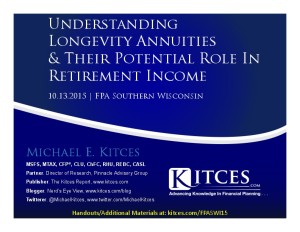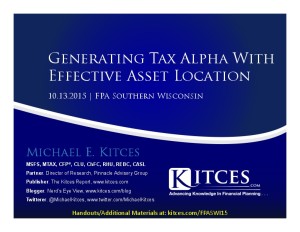Back in 1991, Congress first enabled the "Pease limitation" phasing out itemized deductions, and the "Personal Exemption Phaseout" (PEP), which were designed to limit the tax benefits of those deductions for higher-income taxpayers. While the PEP and Pease limitations were themselves phased out in the mid-2000s, the American Taxpayer Relief Act of 2012 re-enacted them beginning in 2013, making them a current tax planning issue.
Yet the irony is that while they are referred to as "phaseouts of itemized deductions" and a "personal exemption phaseout" the reality is that the Pease limitation and PEP are applied primarily based on the extent by which someone’s income is over specified thresholds. As a result, while they're labeled as penalties to deductions and exemptions, the Pease limitation and PEP actually function more like surtaxes on income, amounting to a 1% marginal tax rate increase for the Pease limitation, and another 1% rate increase per family member for the PEP.
The reason why this distinction matters is that ultimately, as surtaxes on income, the PEP and especially the Pease limitation are not actually disincentives against deduction-producing strategies; for instance, with almost all taxpayers, the tax savings of charitable giving is actually identical with or without the Pease limitation! In the end, this means that advisors and their clients should be cautious about trying to avoid deductions when faced with PEP and the Pease limitation; instead, simply recognize their 1% surtax effects, and focus planning on income given the higher marginal tax rates that result!




